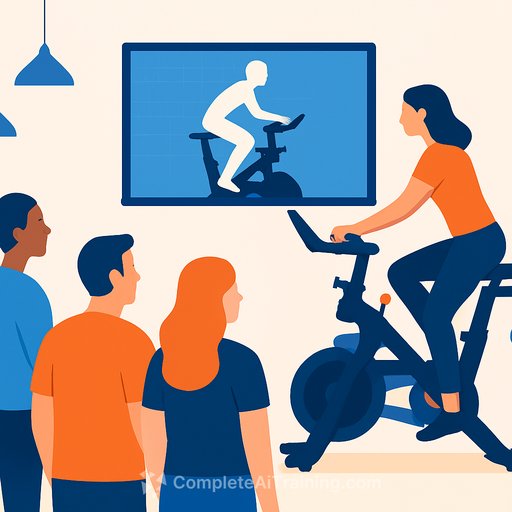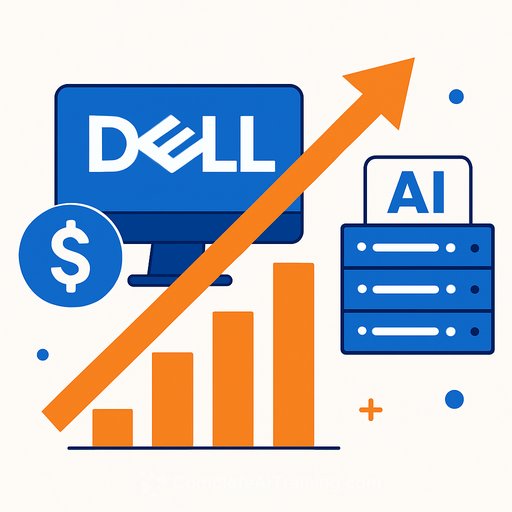Peloton's AI-Powered Equipment Has a Slow Start - Here's What Sales Pros Can Learn
Peloton's new Cross Training Series - an AI-enabled lineup of higher-end treadmills and bikes - is off to a quiet start. Eight weeks after launch, managers across dozens of Dick's Sporting Goods and Johnson Fitness & Wellness stores report modest traction.
Foot traffic is up. People want to try the gear. But interest isn't converting into meaningful sales yet.
What the early signals say
- Curiosity is high: demos and walk-ins have increased.
- Conversion lags: store managers aren't seeing strong close rates.
- The product is "higher-end," which often means a more complex in-store close.
Why curiosity isn't converting (common culprits)
We don't need inside data to spot familiar friction points that stall premium purchases. When interest spikes but orders don't, these patterns show up again and again:
- Value isn't obvious: "AI features" sound cool but may not translate to a faster, better workout in the buyer's mind.
- Demo gap: trials show the hardware, not the outcomes (time saved, coaching quality, visible progress).
- Risk and logistics: delivery, setup, and space concerns can silently kill momentum.
- Sticker shock without framing: buyers need total-cost context (membership, accessories) and monthly options.
- Weak follow-up: if the shopper leaves the store without a scheduled callback or quote, the deal decays fast.
Sales plays to test this quarter
- Outcome-first messaging: replace "AI coaching" with "cuts workout planning to 0 minutes" or "auto-adjusts pace so you hit target zones in 20 minutes."
- 90-second proof demo: one preset workout + real-time AI adjustments + visible progress markers. End with a clear next step, not a vague "think about it."
- Risk-reversal stack: white-glove delivery, room-to-room placement, simple returns. Say it plainly at the start of the demo.
- Bundle to clarity: unit + mat + heart-rate monitor + 3 months membership at one number. Reduce mental math.
- Monthly anchor: lead with "from $X/month" and show the pay-per-use equivalent vs. studio classes.
- On-the-spot social proof: in-store signage with verified reviews, mileage achieved, and "average time to first result."
- Micro-commitments: QR to save the exact demo program to the shopper's phone, then text a quote within one hour.
- Objection scripts ready: space, noise, delivery, maintenance, membership fatigue. Have concise, confident answers.
- Follow-up cadence: Day 0 quote, Day 2 results-focused nudge, Day 5 new incentive (free setup), Day 10 final check-in.
Metrics to watch
- Demo-to-quote rate (goal: 70%+).
- Quote-to-close rate by price tier and bundle.
- Time-to-close from first demo.
- Attach rate for accessories and memberships.
- Return reasons within 30 days (turn objections into preemptive messaging).
- Foot traffic to scheduled demo conversion (QR or appointment booking).
If you sell AI-enabled products, make AI feel concrete
AI features don't sell themselves. Translate them into time, certainty, and visible progress. Show "before/after" in the demo: how the system removes decisions, trims wasted minutes, and keeps the user in the right zone without thinking.
If your team needs a sharper AI storyline for demos, objection handling, and follow-up content, these resources can help:
- AI courses by job role - pick sales-focused paths to tighten messaging fast.
- Latest AI courses - stay current so your pitch doesn't sound like buzzwords.
Bottom line
Peloton's early results show a classic pattern: interest without clarity. The fix isn't louder hype - it's cleaner value framing, tighter demos, and stronger follow-through. Get those right, and premium price points become easier to justify, in-store and online.
Your membership also unlocks:






